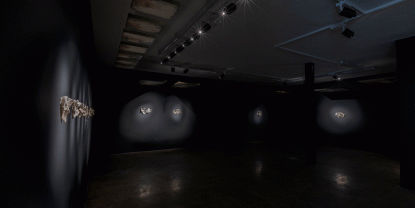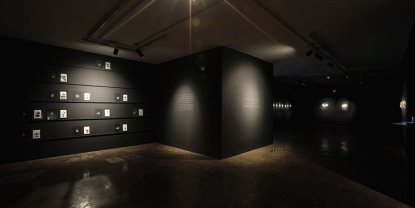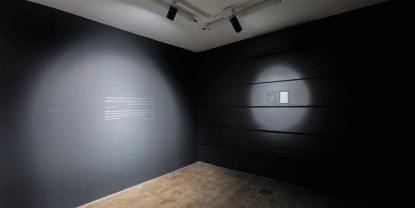The Aleph Archive
Mahsa Aleph
October 12 — November 02, 2018
What is material but the surplus of meaning? Sometimes “Sogand (1)” [trans. “Oath” lit. “Sulfur”]* is evidence for justification and acquittal, and salt is testimony for immunity and conservation. Everything is flawed and imperceptible, except for something about which it is written, “(2)Step beyond speech and you will find a vast arena. See if you are close to being far or far to being close.”**
In her exhibition, Mahsa Aleph has adopted two different approaches: in the first one, she takes another look to “An Introduction to Aleph’s Library” that she had later presented in the sculpture biennial at Tehran Museum of Contemporary Art (2017). Like an introduction that is written after the completion of a book, that work was a preamble to a bigger project entitled “Aleph’s Library,” in which she felt compelled to preserve (or rather protect) books from the destructive eyes of the reader by salting them; therefore, the books were neither readable nor were they capable of being leafed through. In the other approach, she records her latest project called “The Aleph Archive.” This project assumes a kind of logic to arrange and codify images and signs that they are reduced to material. What both of her recent projects have in common is that they praise material, but with different attitudes in how they archive things.
“The Aleph Archive” includes a series of paintings on the ceiling and scraped and burnt cloths on the walls (elevated to the status of artworks). Documents whose words are burnt by sulfur dioxide or scraped (sulfur powder and paper filling). Their remnants are arranged in the dark ambience of the underground floor, and, along with the salted books from “Aleph’s Library,” in the bright space of the ground floor.
In Mahsa Aleph’s works, the physicality of the material takes precedence over its function as a medium: salt nullifies the function of the text at the cost of its preservation. Sulfur burns the words and tissues wipe away the self-portrait. Painting is not painterly anymore; it is, rather, a mere means that is exploited in making the “Aleph Archive”: first, the artist has made the self-portrait, and then she has manipulated and distorted it. What if poetry and painting are nothing but imitations in which neither an object is made nor is an object truly described? Along the lines of illegibility and interruption in reading presented in “Aleph’s Library,” the audience comes across a sense of loss as well as the narrative quality of material—apparently. The works of these installations have been deprived of their defining qualities: the self-portrait is devoid of identity, the book is emptied of words, and the document is void of truth. Aleph nullifies and devaluates; she takes away the purpose of a text and the sublimity of a painting. Later, however, the remnants of what she has taken away recur in a new way.
Here, the remnants tell the story of absence—apparently—and assuming the role of anti-medium, they have priority over medium: salt, sulfur, cleansing tissue, and the shreds. Unlike the salted books of the library that leave the audience alone in an abyss of inaction and passivity, the archive is not unlike a game of coding: an arbitrary relation between the materials and the signs concealed in the writings on the walls.
*) The Persian word “Sogand” or “Seokand” originally meant “Googerd” [trans. “sulfur”]. In the past, eating sulfur [Persian equivalent of “taking an oath” or “swearing”] was employed as a means to verify the truthfulness of the plaintiff’s claims. If the plaintiff’s stayed alive after “eating sulfur,” he would be vindicated, hence the Persian expression “eating sulfur.”
**) From the Discourses of Shams Tabrizi


